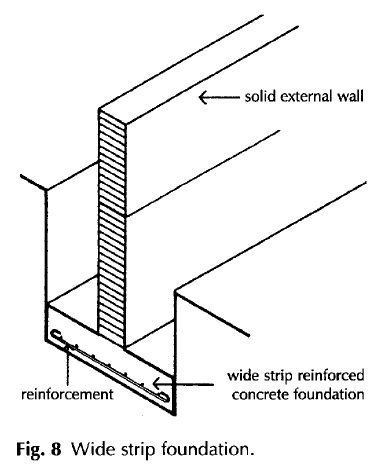Strip foundations on subsoils with poor bearing capacity, such as soft sandy clays, may need to be considerably wider than the wall they support to spread the load to a sufficient area of subsoil for stability. The concrete strip could be as thick as the projection of the strip each side of the wall which would result in concrete of considerable uneconomic thickness to avoid the danger of failure by shear.
The alternative is to form a strip of reinforced concrete, illustrated in Fig. 8, which could be no more than 150 mm thick.
The reason for the use of reinforcement of steel in concrete is that concrete is strong in compression but weak in tension. The effect of the downward pressure of the wall above and the supporting pressure of the soil below is to make the concrete strip bend upwards at the edges, creating tensile stress in the bottom and compressive stress under the wall. These opposing pressures will tend to cause the shear cracking illustrated in Fig. 7. It is to reinforce and strengthen concrete in tension that steel reinforcing bars are cast in the lower edge because steel is strong in tension. There has to be a sufficient cover of concrete below the steel reinforcing rods to protect them from rusting and losing strength.
